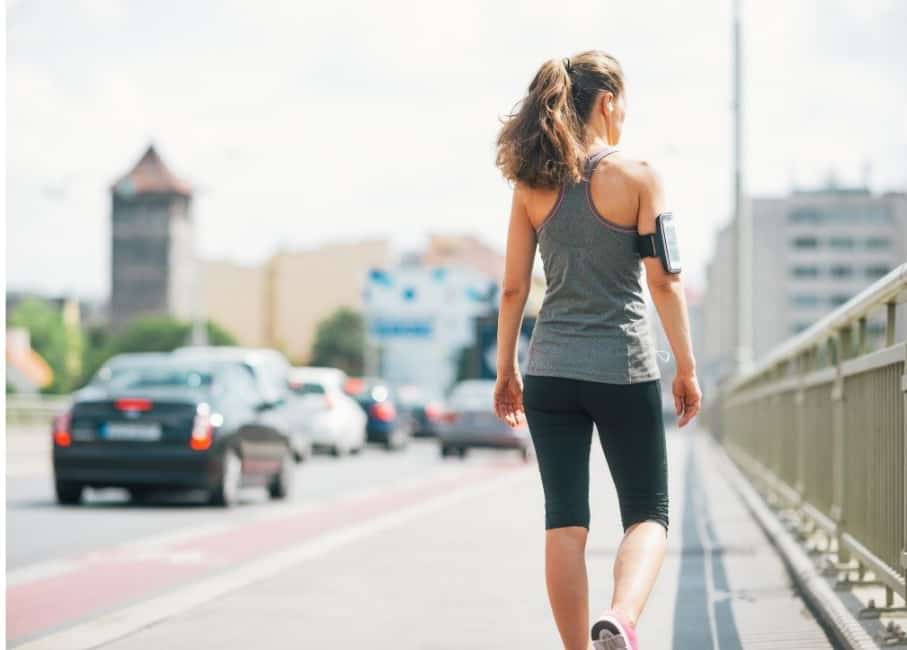Changing your gait while you are in it is difficult, but there are some keys to optimize that swagger. So far in this series, we’ve covered functional tips that are preconditioning if you will – ways to strengthen and pattern your body before taking that first step. Today we’re going to explore two new tips that can be done while in the act of walking! There is so much more to share about walking as a complex exercise, but we’re going to stop here at Part III – for now. (Haven’t seen Part I & II? No worries, you can find them here)
Tip #1 Spring Step
Most of us don’t use our hamstrings and the posterior chain of connective tissue near enough to ensure a healthy low back and hips, which is exaggerated by the amount of time we spend sitting at a computer. It shows up as sluggish walking, stiff legs, and low backache. It’s an easy fix though.
With each step, bring your heel to your bum – or as close to it as you can. Do this without arching your low back. You may notice in order to achieve this you have to work the back of your legs much harder, even adding velocity. That’s the point. Ultimately your gait will become effortlessly faster. The most flawlessly illustrated spring step I’ve ever seen is Usain Bolt’s (world record holder) – just look how high he kicks his heels!
Even if fast isn’t your goal (not everyone is a New Yorker or an athlete) it is imperative to gain hamstring strength and to use them effectively while walking for functional health.
Be sure to add muscular effort to spring your heel up to your hips but *not* on the way back down.
Which brings me to…
Tip #2 No Pounding
When walking barefoot, can you hear either foot stomp on the earth? If so, soften that right away. The tibia (aka shin bone) is the stoutest bone in the body. Meaning, it absorbs an inordinate amount of pressure from the earth into the body while walking. This same bone makes up one-half of the knee joint (it articulates with the femur/thigh bone and is capped with the patella or ‘knee cap’) and is also part of the ankle joint. Therefore, pounding excessively contributes to knee joint issues and a host of other issues from ankle to hip. Time to lighten up!
Last tip: try each of these one at a time. They are simple but the brain registers walking as a complex dynamic exercise (and it is) so give your nervous system a chance to implement the changes and build your coordination.
Here’s to moving gracefully upon the earth,



